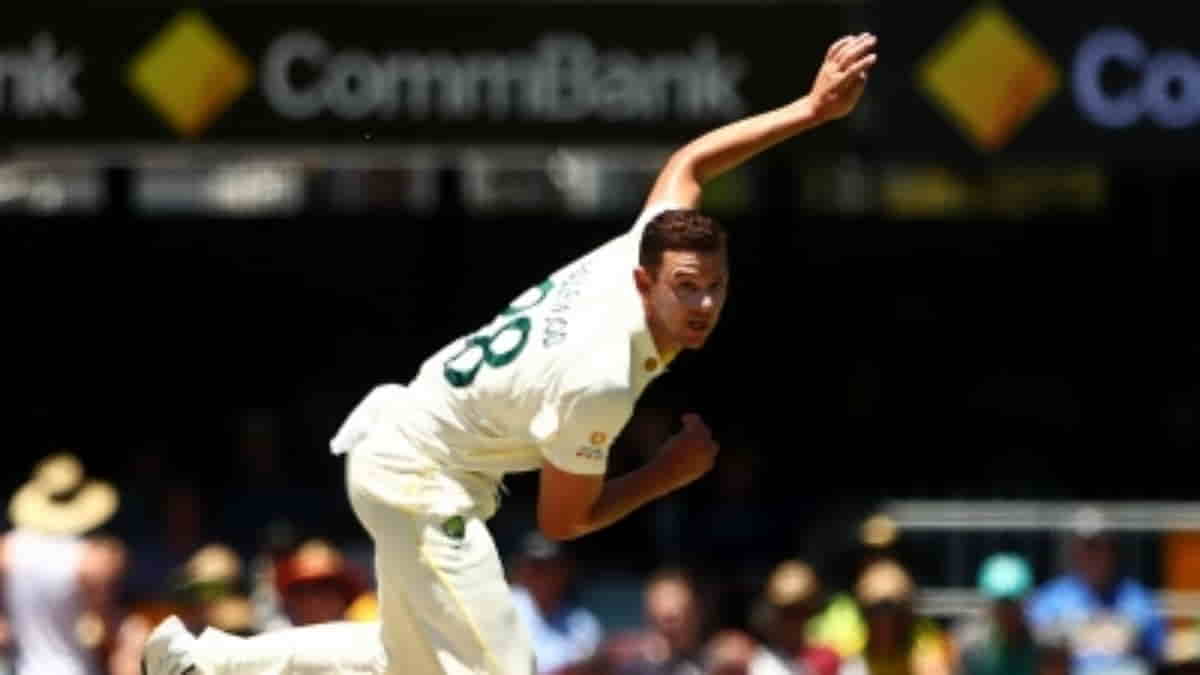
The World Test Championship (WTC) final begins in three days, and Australia has secured ten slots. However, there is still some doubt over the 11th and final spot, which is for the third seamer.
Usman Khawaja, Marnus Labuschagne, Steve Smith, Travis Head, Cameron Green, Alex Carey, Mitchell Starc, Pat Cummins, and Nathan Lyon are already in the squad.
Josh Hazlewood has been a certainty for this slot for years, but his fitness troubles, combined with Scott Boland’s amazing rise, have complicated matters. The buzz in the Aussie camp is that Boland is the favourite to start.
Whatever the case, who should be donning the Baggy Green at The Oval on Wednesday? We compare two speedsters using several measures and weigh the benefits and drawbacks.
Fitness and endurance
The key factor working against Hazlewood going into the championship game on Wednesday. The 32-year-old has played in just 9 Tests since December 2019 and has had three mid-game / mid-series collapses during this time: once against New Zealand in Perth in 2019; once during The Ashes in 2018; and once more against the West Indies six months ago.
He sustained an Achilles injury four months ago and missed the whole Border-Gavaskar Trophy. He is still recovering from that ailment. He only participated in three games in the IPL 2023 as a result of the injury. Hazlewood has begun to “bowl full tilt,” in his own words, but can Australia risk a frontline seamer going off in the middle of a WTC final?
Boland, on the other hand, is healthy and ready to go, so there are no injury or durability issues.
On this front, Boland is chosen.
Experience
Hazlewood has toured England twice before (in 2015 and 2019), and he has a stellar record there with 36 wickets at an average of 23.58 and an SR of 45.5. By taking 20 wickets at 21.85, he helped Australia win the Ashes four years ago.
The New South Welshman’s flawless track record in hostile terrain is compelling evidence that he belongs in the starting XI.
In contrast, Boland has not yet participated in a first-class match in England. He turned down offers from several counties this season, saying, “I did have the opportunity to play county cricket this year, but I prioritised being a bit fresher going into six tests in two months.” He received offers from several counties this season.
Nevertheless, he has prior experience using the Dukes Ball because CA introduced its use in the Shield during the second half of the season from 2016 to 2020.
The Victorian, however, was by no means unplayable with the Dukes ball; his (year-by-year) bowling average in the 16/17, 17/18, and 18/19 seasons, respectively, read 25.1, 30.1 and 26.4. Nevertheless, he did well in the second half of 19/20 (with the Dukes), collecting 13 wickets at a strike rate of 20.3.
However, Hazlewood’s track record and experience well outweigh Boland’s on this front.
Experience to Bowl Indian Players
Hazlewood has bowled a total of 1827 deliveries in Tests against India’s top six players, which is a substantial amount of bowling.
He has only bowled 171 balls and averaged 27, conceding at an SR of only 31.6 against Rohit Sharma, who is the only opponent he has a clearly solid record against.
Kohli, who averages 55.7 against the lanky right-armer in Test matches, is one of the batters who has dominated Hazlewood.
In contrast, Boland has only bowled the aforementioned Indian batsmen 56 deliveries in total throughout Test matches.
Experience is undoubtedly beneficial, but based on the facts presented above, Hazlewood is not a “must-have” because he hasn’t really dominated the Indian batting order.
The Boland, England, and Dukes combination might perhaps make the Indian batters a bit uneasy. In this way, if Boland plays, he could end up being something of a mystery weapon.
What function would either bowler play in the team? (Should they be chosen)
Should they be chosen, Hazlewood and Boland will each be used as strike bowlers in a unique method (Hazlewood with the new ball, Boland as first-change). However, how Australia structures its pace attack will be determined by the third seamer.
If the Kangaroos decide to use Hazlewood, Cummins will bowl himself as the first replacement while Starc and Hazlewood take the new ball.
Boland’s captain, Cummins, will take the new ball with Starc if Boland is chosen.
The fascinating thing about this is that four years ago, when Starc was dropped, Cummins got the new ball in England and did really well, collecting 22 wickets at 21.68.
In fact, Cummins averages 19.80 while taking the new ball outside of the subcontinent.
Boland is capable of playing the workhorse position, something he is accustomed to doing for his state team Victoria, should the wicket turn out to be flat. He can bowl tightly while letting the other bowlers go all out.
Although Hazlewood has performed such physically demanding roles before, it would be dangerous to have him do so now that he is returning from a protracted injury layoff.
Final judgment
Had Hazlewood been fully fit, he would have been the favorite to play in the final, but after balancing the advantages and cons, Boland appears to be the better option.
Keeping an eye on the future — unlike India, Australia has five more Tests to play in the following 45 days, and the last thing they’ll want is to lose a bowler of Hazlewood’s skill before The Ashes begin.
Also Read: Ponting wants India to field both Ashwin and Jadeja in WTC Final (cricfiles.com)





